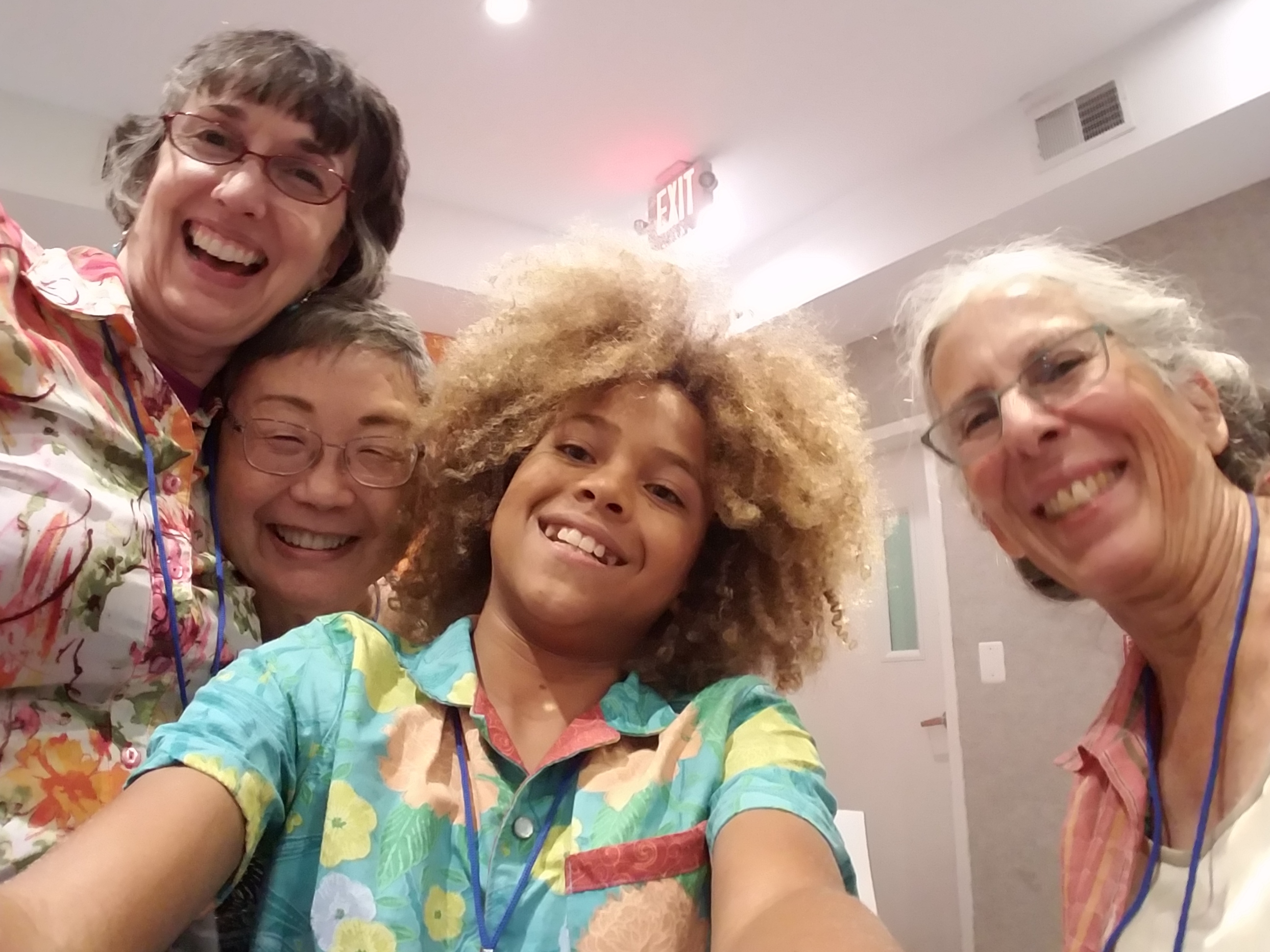- The Meaning of Critical Thinking: A Key Skill for Navigating Today’s Information Landscape - November 3, 2025
- Grandparents Can Develop Activist Grandchildren - September 29, 2025
- Top Six Reasons Credit Union Benefits Are a Smart Choice Over Banks - August 18, 2025
Last Updated on September 29, 2025
Teach Your Child to Be an Activist
My mother was not happy when I arrived home to get a servant costume, the role my friends awarded me in the game of kings and queens. She rooted around in my sister’s closet and came out with an old prom dress. In those days, the style was a bell-shaped skirt to the knees with a bunch of tulle underneath. Also, lots of sparkles. On me, it became a floor-length ball gown. You know what happened. I became the queen.
Maybe my mother was taking a stand for feminism, but I doubt it. I don’t remember ever seeing a member of my family take a position on a social justice issue. However, many people grow up in families that weave activism into the family fabric.
[Learn more about how to find your passion and change the world.]
Teach Your Child to Be an Activist
In Make Trouble, former Planned Parenthood director Cecile Richards described a childhood different from mine. Richards attended a Unitarian Church, which means social justice was part of her DNA. Her father was a civil rights attorney, and her mother, Ann Richards, was elected governor of Texas.
One of my favorite lines in her book is about being away at college for the first time and encountering a picket line on her way to class. She was taught, “to never, ever, cross a picket line.” And she didn’t. She continued the tradition by instilling social justice values in her daughters.
Since we are in a time when parents have more opportunities to influence their children, consider teaching your child to be an activist. Read on to find ways you can instill those values in your children. You may be surprised at how these lessons will help them navigate the world.
Use the Activism Path
In my book, The Happy Activist (formerly What’s On Your Sign?), I guide readers through a five-step path toward finding activism that works. You can use the same framework to teach your child to be an activist.
Step 1: Help Them Find Their Passion
For teenagers and adults, the first step includes taking a deep dive into what you want in your life and in the world. For kids, help them become clearer about the person they want to be when they grow up, and how that translates into goals, values, and roles.
How can you help them find their passion?
Be a Role Model for Your Child
If you are a changemaker, your kids will be more likely to do the same. In an age-appropriate way, talk with them about your activism passion and what you are doing to make the world a better place. Let them participate if they wish. But recognize that your passion or how you choose to do social justice may not be a fit for your child.
Listen to Your Child’s Concerns
One way to help your child focus on their passions is to pay attention to the information they consume and the questions they ask. Family discussions about how systems work and encouragement to speak up are related to teen participation in changemaking. Take the time to answer their questions, even if you have to go find the answers. The search for the information, if shared with your child, may be an activity your kids will remember.
Climate change activist Greta Thunberg learned about the dangers of global warming in school and had trouble focusing on anything else. Her angst about the environment led to depression and other issues, which her parents helped to resolve. One of the ways they did that was by letting Greta follow her passion. They allowed her to conduct Friday school strikes in front of the Swedish Parliament.
Read to Them

Read a variety of social justice books to your child. When they are too young to read, they can still understand stories read to them. Books that profile young activists may be inspiring. Caroline Paul’s You Are Mighty: A Guide To Changing The World, profiles many young activists. For example, in the section on legal options, Paul mentions climate change activist Levi Drahelm, who is a plaintiff in Juliana v. The United States. He became involved because he was concerned about the loss of coral reefs in his Florida East Coast home.
I’m a fan of Rhonda Rucker’s book Make a Change, which is about her husband Sparky’s childhood pray-in to protest segregation.
[This post has gift suggestions for the activist in your life. Or yourself!]
Step 2: Help Them Learn
The second step in the activism path is an inventory of the skills, knowledge, and motivation you bring to activism. For kids, this step will be part of their ongoing development. Remind them of what they do well and help them continue to develop their skills. Help them gain knowledge, in particular about areas where they hold privilege and those where they don’t.
“Looking back, I wish I’d known some activist tactics. And that it had gone further: I wish I’d been taught concepts like privilege, prejudice, and intersectionality at that tender young age, instead of bumbling all the way through early adulthood ignorant of primal social forces.” – Caroline Paul
We are motivated in different ways, and your child will be too. For example, does your child like to do team activities, or do they prefer to work on their own? Do they get jazzed when they learn new things? Understanding their needs will help them find activism that keeps them motivated.
Step 3: Help Them Find Activism Methods That Delight Them
In the Activism Path, step 3 is finding the activism method that lights your fire. Rather than choosing a method that doesn’t appeal to you, finding one that fits you perfectly will help you stay motivated.
For kids, help them realize the variety of ways in which they can make a change. If they want to fight an issue, help them make a match that is appropriate for them. For their skills, knowledge, and motivation. Look for clues in what they choose to naturally. For example, if they have a choice to do a school project in any format, what do they choose? Writing, art, or video?
[Are you an artist interested in making a difference doing something you love? Use The Happy Activist to guide you.]
Environmental activist Kelsey Juliana appeared in a segment of the television show 60 Minutes, being carried in a sling by her activist parents protesting logging. She ended up being the lead plaintiff in the kids’ lawsuit Juliana v. The United States. Now, as an adult, she continues her environmental work.
Step 4: Help Them Be Effective
For people on the activism path, this step helps them understand where they can make the most impact for their cause. For kids, that may mean helping them go through the activism choice grid with their ideas for change. It may also mean helping them circle back to try new things if a method doesn’t have the impact they want. Look for programs that give teens real roles and chances to practice skills tend to get results.
There may be a tendency to think a kid’s activism work must be small in scope. But there are many examples of kids who have made a significant impact for their cause. For instance, Mari Copney, also known as “Little Miss Flint,” has made considerable contributions to her hometown.
Step 5: Help them Stay Motivated
Activism can be hard, and so planning for self-care will help you stay motivated over the long run. In step 5 of the activism path, you set goals, evaluate your stress, and make changes, if necessary.
For your child, this can be the same. Let your child lead and avoid pressure. For example:
“Don’t force your child to take part in something that doesn’t want to. Extend the invitation to go with you to an event or take part in an activity at home. If your child says no, honor that in the same way you would an adult saying no. This prevents resentment building up that can harm your efforts to raise a compassionate child in the long run.” – Bethany Edwards
If a child sets a moderately difficult goal, they will be more motivated. Help them be realistic about the result they’d like to see and a plan to achieve it.
Another useful life skill is learning to recognize how your body experiences stress. Then, your child can deal with it through whatever stress reduction works best for them.
A Gift to Your Child
Early engagement pays off later in higher life satisfaction and education levels. Helping your children incorporate compassion into their lives in a tangible way is a gift. Guide them in learning the values you hold dear and help them find the cause closest to their heart.
[Please share this post with a friend who has children.]
READ NEXT
Browse posts to help you find your purpose.
How To Use The Activism Path To Change The World




This article is both informative and energizing.
I’m glad it resonated with you, Trish.